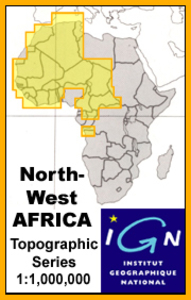-
Home
-
Contributors
-
International
-
Account
-
Information
More From Contributor
- 1374)* Map legend in the language of the area covered by the map. Additional margin ticks show latitude & longitude in steps of 2`. The area covered by each map is 17 x 12 km (11 x 7 miles approx). * Special larger sheets (Nos. from 2501 onwards) – STANDARD editions:* No map legend is included but a separate leaflet can be provided instead. The area covered by each map is 25 x 17 km (15 x 11 miles approx).* Special larger sheets (Nos. from 2501 onwards) – HIKING editions:* An overprint highlights hiking, mountain & alpine paths, including regional & national long-distance trails. The maps also show bus routes with bus stops, plus inns in remote locations. The area covered by each map is 25 x 17 km (15 x 11 miles approx). ...
Includes:: English. The map of Kyrgyzstan clearly shows which areas are presented in greater details on enlargements with contours at 50m intervals with numerous spot heights, relief shading, plus colouring for glaciers & forested areas. Trekking routes are marked, indicating more difficult sections & base camps. Symbols show locations with hotels & other tourist accommodation, restaurants & tourist information points. Latitude & longitude grid is at 1’ intervals. The map is laminated in a format similar to the old cloth-dissected maps so that sections of it can be easily folded back without damage. ...
- no delivery time can be specified for any titles currently out of stock. ...
Includes:: the whole of Nepal & Bhutan. The map has colouring indicating different provinces of China; topographic information is provided by markings for selected peaks. Various places of interest are highlighted. The map shows a large number of place names, all in Latin alphabet only, listed in an extensive index. Latitude & longitude are shown as margin ticks at 2° intervals. The index is next to the map. ...
Includes:: minor roads & tracks. Railway connection to Lhasa is also shown. Internal administrative units are shown with their boundaries & names. National parks & other protected areas are highlighted. A wide range of symbols mark various places of interest including sacred places, palaces, dzongs, archaeological sites, temples, museums, etc. Latitude & longitude lines are drawn at 1 ...

Tibesti Est IGN NF-34
road distances are indicated on main routes. Symbols show airports, mosques, mines, oil and gas fields, lighthouses, ruins and significant isolated buildings. Administrative boundaries are marked and latitude and longitude lines are drawn at 1° intervals, with further margin ticks at 1’ intervals. The map legend is in French only on some sheets, and in English and French on others.*The International Map of the World was a project conceived in the early 20th century to compile a world map series at 1:1, 000, 000 through the efforts of participating nations. The value of the program has declined since 1970 and the IMW is no longer regarded as an active international series.
This page now acts as a permanent archive for this product. Add more information using the comments box below to ensure it can still be found by future generations.
Use our search facility to see if it is available from an alternative contributor.
- Availability: Out Of Stock
- Supplier: Stanfords
- SKU: 3282110136023
Product Description
One of the titles in a series of topographic maps covering much of north-west Africa, produced as part of the IMW* project in 1960’s. Each map covers an area spanning 6° in longitude & 4° in latitude. There is some variation in colouring & the depiction of terrain, but hill-shading, spot heights & contours are used to show the general relief. Additional graphics show features such as dunes, rock outcrops, cliffs, sand areas, escarpments, marshes, seasonal lakes & watercourses, & areas liable to flooding. Bathymetric contours are also included. Communications detail
Includes:: roads, major trails & railways, although there is some inconsistency in colouring & the extent of classification, e.g. not all maps distinguish seasonal roads. On most maps intermediate road distances are indicated on main routes. Symbols show airports, mosques, mines, oil & gas fields, lighthouses, ruins & significant isolated buildings. Administrative boundaries are marked & latitude & longitude lines are drawn at 1° intervals, with further margin ticks at 1’ intervals. The map legend is in French only on some sheets, & in English & French on others.* The International Map of the World was a project conceived in the early 20th century to compile a world map series at 1:1, 000, 000 through the efforts of participating nations. The value of the program has declined since 1970 & the IMW is no longer regarded as an active international series.
Reviews/Comments
Add New
Intelligent Comparison
We couldn't find anything!
Perhaps this product's unique.... Or perhaps we are still looking for comparisons!
Click to bump this page and we'll hurry up.
Price History
Vouchers
Do you know a voucher code for this product or supplier? Add it to Insights for others to use.


 United Kingdom
United Kingdom
 France
France
 Germany
Germany
 Netherlands
Netherlands
 Sweden
Sweden
 USA
USA
 Italy
Italy
 Spain
Spain











 Denmark
Denmark